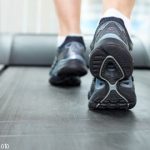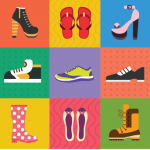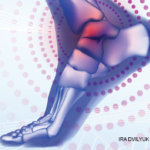Foot pain, which affects an estimated 24% of the adult population, is even more prevalent in patients with arthritis. Although treatment of foot problems remains challenging, research is improving our understanding of the mechanisms, evaluation, and management of foot pain.
Rheumatology professionals heard the latest information about this common symptom during an ARHP panel session titled, “Foot Structure, Footwear, and Foot Pain: Translating Evidence into Practice,” which was presented at the 2011 ACR/ARHP Annual Scientific Meeting here in November. [Editor’s note: This session was recorded and is available via ACR SessionSelect at www.rheumatology.org.]
A multidisciplinary panel, consisting of a scientist, an epidemiologist, and a physical therapist, stressed that foot pain must be treated.
“In the last 10 years, there has been a boom of studies looking at the population burden of foot pain,” said epidemiologist Marian T. Hannan, DSc, MPH, associate professor of medicine at Harvard Medical School and a scientist at Hebrew SeniorLife’s Institute for Aging Research in Boston, Mass. “Foot pain is a significant burden across various populations.”
Consequences of foot pain can include disability, especially difficulties in standing and walking, said Dr. Hannan.
People with severe foot pain have a much higher risk of falls than do people with mild or no foot pain, she said, summarizing new research findings presented at the ACR/ARHP Combined Epidemiology Session by her coauthor, Alyssa B. Dufour, MA, of Hebrew SeniorLife. More intervention studies to reduce falls related to foot pain are “desperately needed,” Dr. Hannan comments.
Other factors may reduce function in people with foot pain. She highlighted recently published research, which suggests that functional performance in people with foot pain is worse in those who are obese, even after controlling for relevant factors.1
Shoes and Foot Pain
Research also shows a link between foot pain and past footwear.2 “Older women who said they usually wore athletic shoes were 67% less likely to have pain in the hindfoot than women who wore other types of shoes,” said Dr. Hannan, a study coauthor.
This population-based study also found that most women have worn footwear with poor biomechanical support, such as sandals, slippers, and high heels—classified as “poor” shoe types in the study. Only 2% of men reported having worn “poor” shoes, and men showed no relation between shoe type and foot pain. The study found that most people change their shoe habits when they have foot pain, which Dr. Hannan said is evidence of modifiable behavior.
Another panelist, Howard J. Hillstrom, PhD, said that the choice of the best shoe depends on multiple factors.
“Proper footwear will depend on the patient’s age, pathology, disease stage, and activity,” said Dr. Hillstrom, director of the Leon Root, M.D. Motion Analysis Laboratory at the Hospital for Special Surgery in New York, N.Y. “What’s good for one person may not be good for another.”
here may be adaptive changes going on related to [our arthritis patients’] longstanding foot pain that influence their disability.
—Smita Rao, PT, PhD
Foot Evaluation
Footwear should be part of the clinical evaluation of patients with foot pain, said Smita Rao, PT, PhD, assistant professor of physical therapy at New York University in New York City. The shoe fit, wear patterns, flexibility, and lacing all can contribute to or relieve foot symptoms, she said. For instance, her patients with midfoot osteoarthritis reportedly feel less discomfort when they lace their shoes in a way that relieves pressure on the painful dorsal aspect of their feet.
Her clinical evaluation also includes a history, a questionnaire such as the Foot and Ankle Ability Measure, and gait analysis. The latter includes motion assessment and evaluation of plantar load distribution.
In a study of patients with midfoot arthritis, Dr. Rao noted that her patients found descending stairs difficult and painful.3 To examine which motions of the foot may contribute to pain, she used a motion capture system. On straight-ahead barefoot walking, these patients showed a stiffening strategy to avoid pain, which they could not do as they stepped down from a single step.
An accompanying study examined whether patterns of loading correlated with the patients’ pain. This study found that patients with chronic midfoot osteoarthritis have mechanical overloading at the medial midfoot during walking, which Dr. Rao said likely contributes to their pain.4
“Our arthritis patients with foot pain are not using their ankle to push off during walking as much as they should, and they have increased hip pull-off,” Dr. Rao said. “There may be adaptive changes going on related to their longstanding foot pain that influence their disability.”
With these data, Dr. Rao and colleagues attempted an intervention at the level of motion. They compared an in-shoe, three-quarter orthotic device with arch support versus full-length carbon graphite orthoses without arch support.5 Contrary to popular belief that patients with osteoarthritis need arch support, Dr. Rao found that the arch-supporting three-quarter device improved alignment but did not reduce foot pain. The full-length orthoses limited the range of motion—thus providing stiffness—and improved pain in these patients, she reported.
“We seem to have matched the impairment with our treatment strategy to get good results,” Dr. Rao said.
The full-length carbon graphite orthoses also reduced regional loading in patients with midfoot osteoarthritis, the researchers found.6 These results suggest an additional mechanism for pain relief, she said.
Dr. Rao called Dr. Hillstrom’s biomechanical testing methods “state-of-the-art.”
In the last 10 years, there has been a boom of studies looking at the population burden of foot pain. Foot pain is a significant burden across various populations.
—Marian T. Hannan, DSc, MPH
Central to his research is developing, validating, and applying quantitative measures of foot structure and foot function, Dr. Hillstrom stated. In his laboratory, assessment of foot structure (low, normal, or high arch and tendency towards overpronation or supination) includes arch height and flexibility measured from both sitting and standing positions, as well as hindfoot alignment. For foot function, they measure barefoot plantar pressure and pronation of the foot and ankle during gait. To do so, the investigators use the Center of Pressure Excursion Index, which Dr. Hillstrom codeveloped with Jinsup Song, DPM, PhD, at Temple University School of Podiatric Medicine in Philadelphia, Pa.
Their research shows biomechanical differences in peak pressure measurements depending on arch height. Flat-footed patients overload the medial structures of the foot more than people with other foot types, according to Dr. Hillstrom.
“It’s clear that the structure and function of human feet are different, and foot function is foot structure dependent,” he said.
The Foot’s Role in Other Pathology
Foot problems are a concern for rheumatology health professionals because osteoarthritis and autoimmune disorders are common reasons for foot pain. The foot also may play an accommodative role in pathology elsewhere in the body, such as knee osteoarthritis, according to Dr. Hillstrom.
In an interview with The Rheumatologist, session moderator Mary T. Wright, OT, stressed the importance of this research showing a correlation between back, hip, and knee pain and the foot.
“Often, clinicians do not evaluate the foot when there is pain in these other areas,” said Wright, an occupational therapist at ProMedica Toledo Hospital, Toledo, Ohio.
The information presented about footwear showed the therapeutic challenges for clinicians, she adds, noting that “there probably is not a right shoe or right orthotic for everyone.”
The Arthritis Foundation and the American Orthopaedic Foot and Ankle Society supported Dr. Rao’s research, and the National Institutes of Health funded work by Drs. Hillstrom and Hannan.
Kathleen Louden is a medical writer based in the Chicago area.
References
- Golightly YM, Hannan MT, Shi XA, Helmick CG, Renner JB, Jordan JM. Association of foot symptoms with self-reported and performance-based measures of physical function: The Johnston County osteoarthritis project. Arthritis Care Res. 2011;63:654-659.
- Dufour AB, Broe KE, Nguyen US, et al. Foot pain: Is current or past shoewear a factor? Arthritis Rheum. 2009;61:1352-1358.
- Rao S, Baumhauer JF, Tome J, Nawoczenski DA. Comparison of in vivo segmental foot motion during walking and step descent in patients with midfoot arthritis and matched asymptomatic control subjects. J Biomech. 2009;42:1054-1060.
- Rao S, Baumhauer JF, Nawoczenski DA. Is barefoot regional plantar loading related to self-reported foot pain in patients with midfoot osteoarthritis? Osteoarthritis Cartilage. 2011;19:1019-1025.
- Rao S, Baumhauer JF, Tome J, Nawoczenski DA. Orthoses alter in vivo segmental foot kinematics during walking in patients with midfoot arthritis. Arch Phys Med Rehabil. 2010;91:608-615.
- Rao S, Baumhauer JF, Becica L, Nawoczenski DA. Shoe inserts alter plantar loading and function in patients with midfoot arthritis. J Orthop Sports Phys Ther. 2009;39:522-528.




